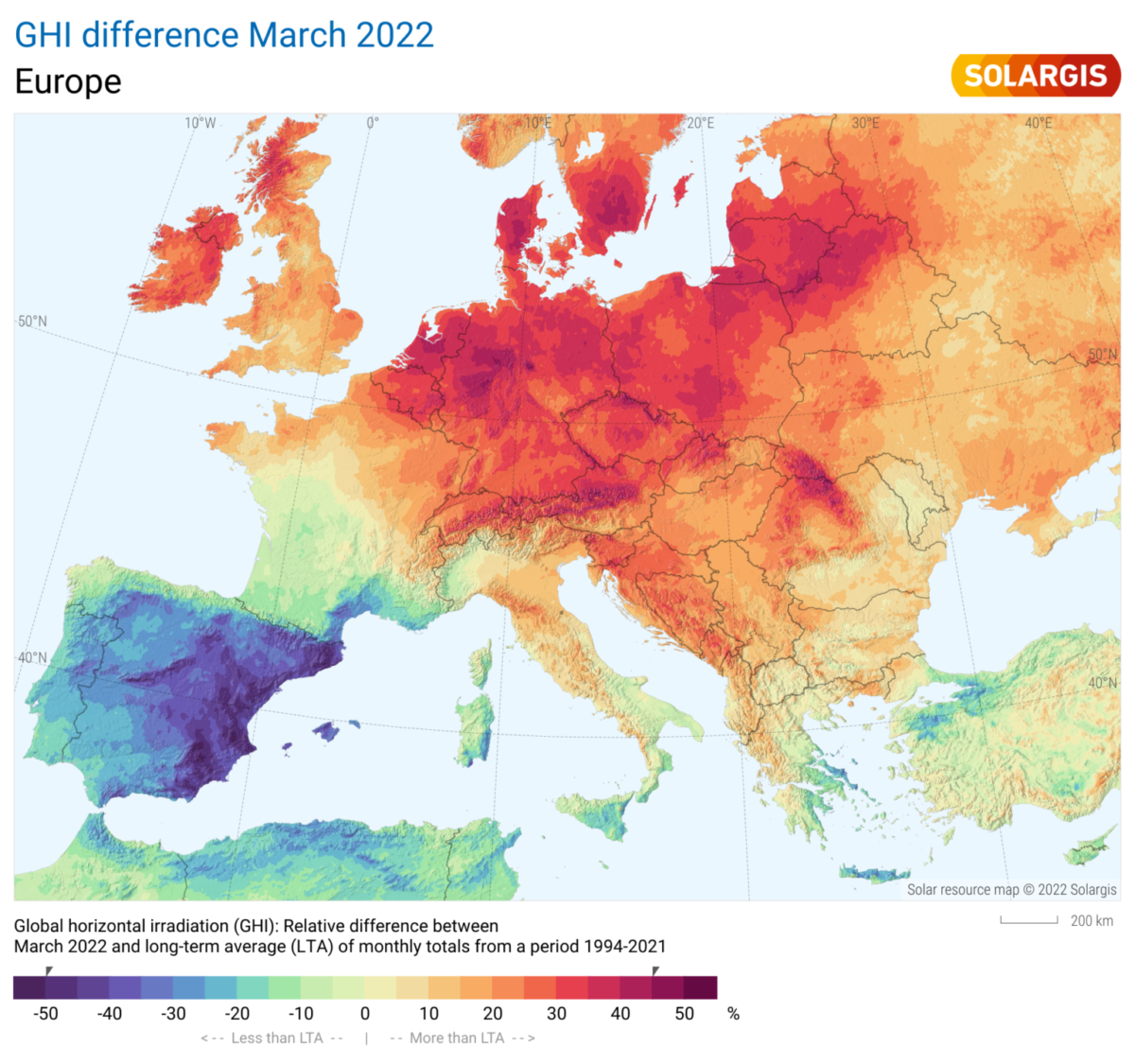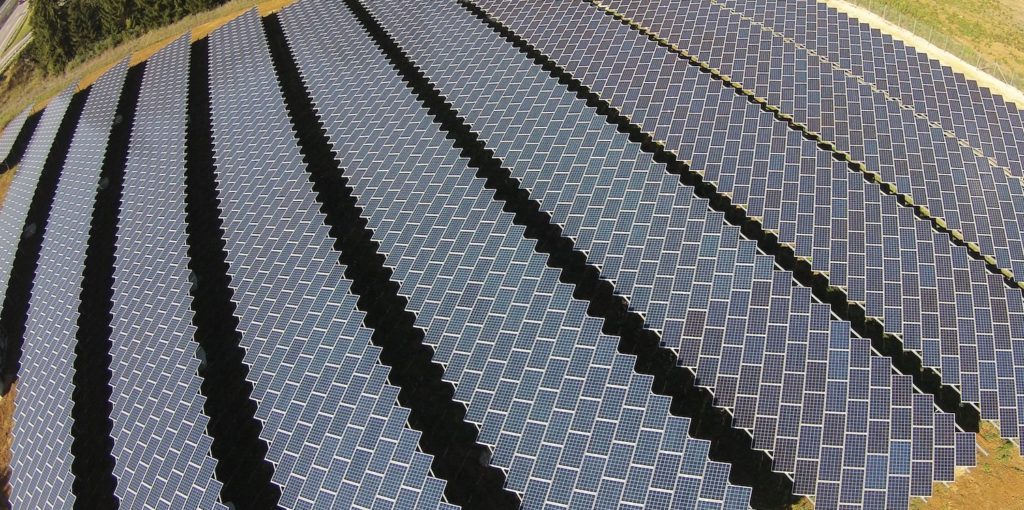From pv magazine Spain
In late spring, Slovakia-based solar data provider Solargis analyzed its monthly difference maps and discovered an alarming drop in solar irradiation in Spain due to bad weather. There was a 50% decrease in solar irradiation in March – the largest decline in 28 years and the most extreme since the start of satellite records in 1994.
By contrast, Germany and the Balkans recorded solar irradiation levels that were 45% higher in the month of March than the average of the last 28 years for the same month.
“Solar generation is 100% dependent on incident irradiation,” a Solargis spokesperson told pv magazine. “With 50% less irradiation, solar power generation will drop by 50%.”
Asier Ukar, managing director of PI Berlin SL, said that the drop in irradiation implies a decline in the efficiency of modules.
“The data sheet efficiency of solar modules is always calculated at nominal conditions, that is, 1,000 W/m2, at 25 C cell temperature and an AM of 1.5,” he said. “Therefore, in the simulations that are made for a project, in addition to wiring, dirt, and other factors, low irradiation is included, since it is one of the circumstances that imply that the performance ratio goes down.”
Spain is one of the sunniest countries in Europe and Germany plans to triple its solar capacity to 215 GW, so these significant deviations from average values are a challenge for project developers and investors. But they are also a problem for Europe's energy independence, as the continent's grid interconnections cannot accommodate the growth in renewables needed to meet climate goals.
“Controlling the climate is beyond our capabilities, however, by looking at Europe as an interconnected energy grid, rather than a specific country, there is potential to balance the market,” said Solargis CEO Marcel Suri. “Through the SERENDI-PV European project, we are working to improve the short-term forecast of added photovoltaic power, the evaluation and forecast of energy in the presence of snow, dust and extreme weather conditions, the improvement of simulations, the reduction of uncertainty to support the creation of an effective and modern digitized network.”
*The article was updated on June 29 to specify that the drop in solar radiation was due to bad weather conditions.
This content is protected by copyright and may not be reused. If you want to cooperate with us and would like to reuse some of our content, please contact: editors@pv-magazine.com.




It’s because scum are creating clouds, it was near enough overcast from November to may the entire time the past 2 years even in South of Spain. Geo-engineering is terrorism!
This is a good example of a bad article. Doesn’t claryfy WHY It decreased…
Perhaps, mentioning the unusual occurrence of the largest dust storm in the last 50 years that filled the air with fine particulates from the Sahara “might” have been a contributing factor that the author should mentioned. With visibility down to less than a kilometer for a number of days and solar irradiance significantly affected for a least 2 weeks, it seems a relevant data point that should have been included in this article.
I have a pv solar plant in th esouth of sapin north of Malaga and i control very much all the datas with a modern program.
The number of sun hours has been for the last 6 month droping from last year 2021 same period of time from 978 sun hours to 2022 923 hours not even 6 percent less
we did not performed worse so far this year in production
I am amazed to read the information above, WHERE and how this mentioned drop of 50% is coming from, i of course limit my statistic to south spain
We had indeed several days of sahara dust but this has not been agravating so much the performance.